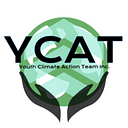Climate Change and the Emergence of Future Pandemics
Since the emergence of COVID-19, scientists have indicated how global pandemics will become the new normal, and many signs point to climate change as a leading cause of this change. A recently released U.N. report states that “an estimated 1.7 million currently undiscovered viruses are thought to exist in mammal and avian hosts. Of these, 540,000 to 850,000 could infect humans.” The likelihood of these strains reaching humans and mutating to the point of infection has gone up exponentially with the displacement of animals, often caused by habitat destruction from deforestation and the changing climate. As natural ecosystems are being forcibly altered, certain species are coming into closer contact with humans than ever before, bringing parasites and pathogens to which we have no natural resistance. For example, in West Africa, the emergence of Ebola coincided with a rise in the clear cutting of forests that forced mosquitos carrying the virus to find new habitats.
Another prominent human cause of this crisis is confined animal feeding operations (CAFOs) that can put people at risk for diseases like swine flu. Moreover, putting many animals in contact with each other contributes to creating new virus strains that are harder to kill. CAFOs and other unsustainable agricultural practices lead to resilient bacteria and pathogens that can easily spread to humans through contact with producers or products. One example of this is influenza, which can spread from pigs to humans when enclosed in confined spaces.
Not only does climate change contribute to a rise in human epidemics and pandemics, but it also leads to a rise in viruses in other animals, as with Ebola in gorillas and fungal algae plagues in marine species. In the case of the 2018 Ebola outbreak, many large primates became infected. Another contributor is the melting of ice sheets and caps caused by climate change. Past pathogens are often frozen in ice or permafrost and, when they melt, those “dead diseases” are unearthed and can infect humans.
Communicable diseases are more likely to spread from other animals to humans or be reexposed by melting ice. Additionally, the rise in air pollution and extreme heat means that the human health standard is lower to begin with, reducing our resilience to diseases overall. In a world where we are so easily connected through technological innovation, the spread of disease is inevitable, but it can be mitigated by taking the issue of our changing climate seriously and putting time, money, and energy into habitat preservation and resource conservation.
